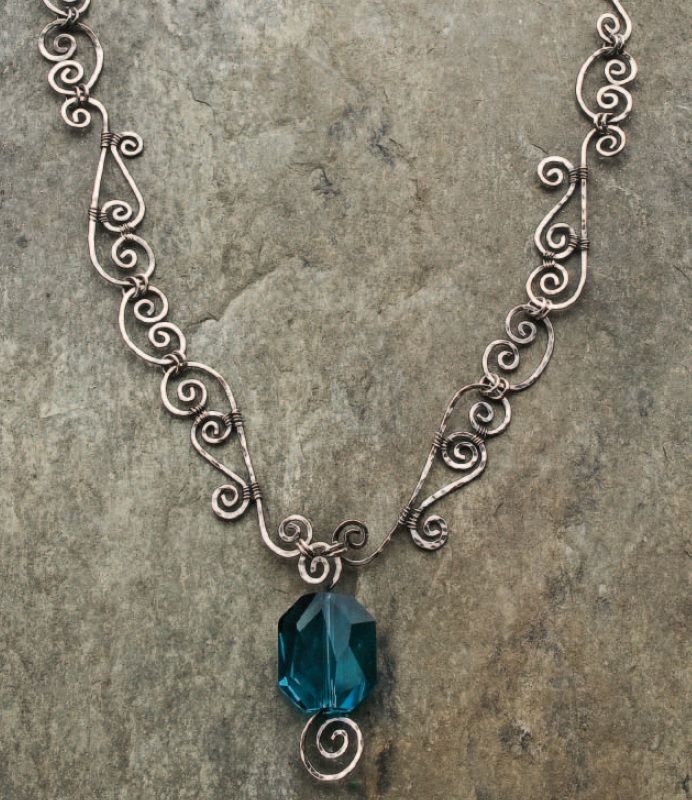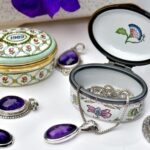When it comes to selling gold and diamond jewelry, finding the right avenue can be a daunting task. With numerous options available, it’s essential to understand the value of your precious items and make informed decisions. In this comprehensive guide, we will explore various avenues for selling gold and diamond jewelry and provide valuable tips to maximize returns.
Gold and diamond jewelry has long been cherished for its enduring value. Whether it’s an heirloom passed down through generations or a once-loved piece that no longer fits your style, selling your jewelry can offer financial opportunities. However, before embarking on this journey, it’s crucial to understand why people choose to sell their jewelry.
There are common reasons why individuals decide to part ways with their gold and diamond treasures. For some, financial obligations may arise where the proceeds from a sale can alleviate burdens or support new ventures. Others may simply desire a fresh start or wish to upgrade their collection with more contemporary pieces. Whatever the motivation may be, knowing the inherent worth of gold and diamonds is vital in determining where best to sell them.
Understanding the Factors that Affect the Selling Price
When it comes to selling gold and diamond jewelry, one of the most crucial aspects to consider is the factors that affect the selling price. Understanding these factors can help individuals make informed decisions and potentially maximize their returns. There are several key factors that influence the price of gold and diamond jewelry, including purity, weight, and market trends.
Purity
The purity of gold is measured in carats, with 24-carat gold being considered pure gold. However, most gold jewelry contains alloys to increase durability and modify color. It is important to determine the exact purity of your gold jewelry as it directly affects its value. Jewelry with a higher carat value will generally command a higher selling price.
For diamond jewelry, the quality of the diamonds plays a significant role in determining its value. The Gemological Institute of America (GIA) developed a grading system based on the four Cs: carat weight, color grade, clarity grade, and cut grade. Diamonds with higher grades in these areas will typically have a higher selling price.
Weight
The weight of both gold and diamonds contributes to their overall value. Gold is sold by weight, usually in grams or troy ounces, so knowing how much your jewelry weighs is crucial when determining its worth. Similarly, diamonds are priced per carat, meaning that larger stones will generally be worth more than smaller ones.
Market Trends
Keeping an eye on market trends is essential when selling gold and diamond jewelry. The prices of both gold and diamonds fluctuate based on supply and demand dynamics in the market. Researching current market trends can give sellers an idea of whether it’s an opportune time to sell or if they should wait for better prices.
By considering factors such as purity, weight, and market trends before selling their jewelry, individuals can gain a better understanding of its potential selling price. This knowledge will allow them to make informed decisions when it comes to choosing the selling avenue that best suits their needs and maximizing their returns on these valuable possessions.
Research and Evaluation
When it comes to selling your gold and diamond jewelry, one of the most crucial steps is determining its worth. By researching and evaluating your jewelry, you can have a better understanding of its value and make an informed decision when it comes to pricing and selling. This section will provide a step-by-step guide on how to research and evaluate the worth of your jewelry.
- Identify Hallmarks: Start by examining your jewelry for any hallmarks or stamps that indicate its authenticity and quality. These marks, such as “925” for silver or “750” for 18K gold, can give you valuable information about the metal content of your jewelry. Research different hallmarks and their meanings to determine the purity of your piece.
- Assess Gemstone Quality: If your jewelry features gemstones, it’s important to assess their quality as well. Look for any visible flaws or inclusions in the gemstones, as these can affect their value. Additionally, consider factors like color, cut, clarity, and carat weight to get a better idea of their worth.
- Determine Weight: To accurately price your gold or diamond jewelry, you’ll need to determine its weight. Use a precision scale to weigh your piece in grams or carats, depending on the type of jewelry you have. Keep in mind that some gemstones may add additional weight but do not significantly increase its value unless they are high-quality stones.
By following these steps, you can begin to establish a rough estimate of your jewelry’s worth. However, keep in mind that evaluating the exact value requires expertise and market knowledge that professionals possess. Consider getting a formal appraisal from a reputable jeweler or appraiser who can provide an accurate assessment based on current market trends.
| Step | Description |
|---|---|
| Identify Hallmarks | Examine jewelry for hallmarks or stamps indicating authenticity and quality |
| Assess Gemstone Quality | Evaluate the quality of gemstones by considering factors like flaws, color, cut, clarity, and carat weight |
| Determine Weight | Weigh the jewelry using a precision scale in grams or carats to establish a more accurate estimate. |
Physical Jewelry Stores
When it comes to selling gold and diamond jewelry, physical jewelry stores provide a traditional and familiar option for many individuals. However, there are advantages and disadvantages to consider before deciding whether to sell your jewelry in a brick-and-mortar store.
One of the major advantages of selling your jewelry in a physical store is the ability to have your items physically inspected by professionals. This can provide you with a sense of reassurance regarding the authenticity and value of your jewelry. Additionally, some stores may offer immediate payment upon reaching an agreement on the sale price. This can be beneficial if you are in need of quick funds.
On the other hand, there are some potential limitations when it comes to selling in physical stores. For one, not all stores may be equipped with professional appraisers or gemologists who can accurately evaluate your jewelry’s worth. This means that you may not always receive fair offers for your items. Additionally, physical stores have a relatively limited local market reach compared to online platforms or auction houses.
| Advantages | Disadvantages |
|---|---|
| – Authenticity verification | – Potential limited local market reach |
| – Immediate payment upon agreement | |
| – Personal inspection of items |
Ultimately, whether physical jewelry stores are the best avenue for selling your gold and diamond jewelry depends on your personal preferences and circumstances. If you value face-to-face interactions and want immediate payment for your items, then this option may suit you well.
However, if you prioritize a wider market reach and potential for higher prices, then exploring online platforms or auction houses may be more suitable. It’s important to carefully evaluate your options and choose the avenue that aligns with your goals and needs.
Online Marketplaces
In today’s digital age, selling gold and diamond jewelry online has become increasingly popular. The convenience and wider reach offered by online marketplaces make them an attractive option for individuals looking to sell their cherished pieces. Here are some popular online platforms where you can sell your gold and diamond jewelry:
- Etsy: Known for its handmade and vintage items, Etsy provides a platform for independent sellers to showcase their unique pieces of jewelry. With a large customer base that appreciates craftsmanship and customized designs, Etsy can be a great option for selling one-of-a-kind gold and diamond jewelry.
- eBay: One of the most well-known e-commerce websites, eBay allows individuals to auction or list their jewelry for sale. Its extensive user base and global presence provide sellers with access to a wide range of potential buyers. eBay also offers seller protection policies to ensure secure transactions.
- Poshmark: While primarily known as a fashion marketplace, Poshmark has gained popularity in recent years for its luxury accessories category, which includes high-end jewelry. This platform is known for its social aspect, where buyers can engage with sellers directly, making it a great choice for building relationships with potential customers.
Selling jewelry on online marketplaces has several benefits. First and foremost, it provides sellers with a wider audience compared to traditional physical stores. Online platforms have international reach, allowing sellers to tap into markets beyond their local area.
Another advantage is the convenience factor – selling online eliminates the need to visit multiple physical stores or attend auctions in person. Instead, sellers can manage their listings from the comfort of their own homes.
Additionally, online marketplaces often offer competitive pricing due to increased visibility and competition among buyers. Sellers have the flexibility to set their prices or choose from various selling formats such as auctions or fixed pricing.
However, there are certain considerations when selling gold and diamond jewelry online. It is important to thoroughly research the marketplace and ensure that it has robust seller protection policies in place. It is also essential to accurately describe and photograph the jewelry to attract potential buyers. Detailed descriptions, highlighting features such as weight, purity, and any gemstone certifications or appraisals, can instill trust and confidence in buyers.
Moreover, sellers should factor in shipping costs, packaging requirements, and insurance coverage when listing their jewelry online. Offering secure payment methods and promptly addressing any buyer inquiries will also contribute to a smooth transaction.
Local Jewelers
Advantages of Selling Jewelry to Local Jewelers
One avenue for selling gold and diamond jewelry that should not be overlooked is local jewelers. These professionals possess the expertise and knowledge needed to accurately assess the value of your jewelry, making them a reliable option. There are several advantages to selling your jewelry to local jewelers.
Firstly, local jewelers often have a strong reputation within the community. Their established presence in the industry can provide assurance that you are working with someone trustworthy and reliable. This is particularly important when dealing with high-value items such as gold and diamond jewelry. Building a relationship with a reputable local jeweler can also be beneficial if you plan on buying or selling more jewelry in the future.
Secondly, local jewelers have in-depth knowledge about various types of jewelry and precious stones. They can accurately identify gemstones, determine their quality, and evaluate the craftsmanship of your piece. This expertise allows them to provide you with a fair assessment of the value of your jewelry based on its unique characteristics.
Tapping into Expert Advice
Another advantage of working with local jewelers is the access to expert advice they provide. They can educate you on market trends, helping you make better-informed decisions when it comes to pricing and timing your sale. Their understanding of current demand for specific styles or brands can give you an advantage in negotiating a favorable deal.
Additionally, local jewelers often have connections within the industry, which can provide further opportunities for selling your jewelry at a higher price point. For example, they may have contacts with collectors or other buyers who specialize in certain types of fine jewelry. By leveraging these connections, local jewelers can help ensure that you reach potential buyers who appreciate and are willing to pay top dollar for your pieces.
Overall, tapping into the expertise and trust of local jewelers offers several advantages when it comes to selling gold and diamond jewelry. Their reputation within the community, knowledge about jewelry, and access to expert advice can help you navigate the selling process with confidence.
Auction Houses
Auction houses offer a glamorous and potentially lucrative option for selling gold and diamond jewelry. The allure of auctions lies in the opportunity to attract high-end buyers, receive expert advice, and potentially achieve higher selling prices compared to other avenues. When considering auction houses as a selling option, there are several factors to keep in mind.
One advantage of using auction houses is the exposure to a wider market. Auctions attract serious collectors, investors, and enthusiasts who are willing to pay top dollar for unique and exceptional pieces. Additionally, auction houses often have established clientele who actively participate in bidding, increasing the chances of attracting interested buyers.
Another benefit of selling jewelry through an auction house is the potential for higher selling prices. The competitive bidding environment can drive up the value of sought-after items, resulting in higher returns for sellers. However, it is important to note that auction houses typically charge seller’s fees and commissions based on the final selling price.
Before choosing an auction house, it is crucial to research and carefully select a reputable one that specializes in jewelry auctions. This ensures that your jewelry will be showcased in a professional manner and reach the right target audience. Additionally, consider factors such as the auction house’s track record, marketing strategies, and customer reviews before making a decision.
Overall, auction houses offer a glamorous option for selling gold and diamond jewelry. They provide exposure to a wider market and have the potential for higher selling prices. However, it is essential to thoroughly research and select reputable auction houses that specialize in jewelry auctions for the best results.
| Advantages | Disadvantages |
|---|---|
| Exposure to a wider market | Seller’s fees and commissions |
| Potential for higher selling prices | Potential risks of not reaching reserve price |
| Access to expert advice | Selecting a reputable auction house |
Evaluating Offers
When it comes to selling gold and diamond jewelry, evaluating offers is a crucial step in maximizing returns. Here are some tips on how to assess offers and negotiate for better deals:
- Research the Market: Before accepting an offer, it’s important to have a good understanding of the current market trends. Keep an eye on gold and diamond prices and compare them with the offer you’ve received. This will help you determine if the offer is fair or if there’s room for negotiation.
- Consider Fees and Commissions: Some buyers may charge fees or commissions as part of the transaction. It’s important to factor these additional costs into your decision-making process. Compare different offers and consider not only the final selling price but also any associated fees that may affect your overall return.
- Payment Methods: Evaluate the payment methods offered by potential buyers. Cash payments are often preferred as they provide immediate access to funds, but other options such as bank transfers or certified checks may also be acceptable depending on your preferences and level of trust with the buyer.
- Seek Multiple Offers: Don’t settle for the first offer that comes your way. Instead, take your time to explore different avenues for selling your jewelry and gather multiple offers from various buyers or platforms. This will give you a better sense of what your jewelry is worth in today’s market and allow you to make a more informed decision about which offer to accept.
- Negotiate: Remember that offers are not set in stone, and there may be room for negotiation. If you feel that an offer is lower than expected or if you have received higher offers elsewhere, don’t hesitate to negotiate with the buyer. Explain your reasons for seeking a higher price based on market research or other relevant factors.
By carefully evaluating offers and considering factors like fees, commissions, payment methods, and market trends, you can maximize returns on your gold and diamond jewelry sale while ensuring a fair transaction.
Bonus Tips:
- When negotiating, it can be helpful to have documentation that supports the value of your jewelry. Obtain appraisals or certifications from reputable experts that verify the authenticity and quality of your pieces.
- If you’re not satisfied with the offers you receive, consider exploring alternative selling options such as consignment shops or private sales. These avenues may require more time and effort, but they could potentially result in higher returns for your jewelry.
Remember that each selling avenue has its pros and cons, so it’s important to carefully evaluate your personal circumstances and preferences before making a decision.
Finalizing the Sale
When it comes to selling gold and diamond jewelry, finalizing the sale is an important step that requires caution and attention to detail. Ensuring a safe and secure transaction is crucial to protect yourself and your valuable items. This section will provide guidance on how to navigate this stage of the selling process.
Verifying Buyer Credentials
Before proceeding with the sale, it is essential to verify the credentials of potential buyers. Look for reputable buyers who have a track record of fair transactions. Check online reviews, ask for references, and research their business history to ensure they have a good reputation. Avoid buyers who require excessive personal information or refuse to provide identification.
Properly Packaging the Items
To safeguard your jewelry during transit or delivery, it is important to package it securely. Use protective materials such as bubble wrap or jewelry boxes designed for shipping. Consider using tamper-evident packaging or registered mail services for added security. Also, photograph the items before shipping or handing them over in case there are any disputes about their condition later on.
Utilizing Secure Payment Methods
When finalizing the sale, choose payment methods that offer secure transactions. Cash transactions can be risky due to the potential for counterfeit money or theft. Bank transfers provide a reliable way to receive payment but ensure that funds are cleared before releasing the jewelry. PayPal and other digital payment platforms offer additional protection with buyer-seller dispute resolution processes.
It’s also worth noting that meeting in neutral public locations, such as banks or police stations, can add an extra layer of safety when finalizing sales in person.
By following these precautions, you can help minimize risks and ensure a safe and secure transaction when selling your gold and diamond jewelry.
Conclusion
To ensure a successful sale, individuals should also take steps to maximize the value of their jewelry. Additional tips include cleaning and polishing the jewelry before listing it for sale, as well as finding creative ways to showcase the pieces to potential buyers both offline and online. By presenting their jewelry in the best way possible and appealing to the desires of buyers, sellers can increase their chances of receiving higher offers.
Lastly, throughout the entire selling process, it is essential to prioritize safety and security. Sellers should verify buyer credentials before finalizing any transactions and ensure that they properly package their items for shipping. It is also crucial to utilize secure payment methods that protect both parties involved.
By following these guidelines and taking into consideration all available options for selling gold and diamond jewelry, individuals can confidently navigate through this process and maximize their returns on their prized possessions. Selling jewelry may not always be an easy decision or task, but with some research, evaluation, and thoughtful planning, individuals can make a successful sale while safeguarding their interests.
Bonus Tips
As a bonus, here are some additional tips for maximizing the value of your gold and diamond jewelry. Before selling your pieces, it’s important to ensure that they are in the best possible condition. Consider cleaning and polishing your jewelry to make them sparkle and shine. This can significantly enhance their visual appeal and attract potential buyers.
In addition, think about presenting your jewelry in a creative and enticing way. If you’re selling offline, consider organizing a jewelry showcase or hosting a trunk show where people can see and try on your pieces. This provides a personal touch and allows potential buyers to fully appreciate the beauty of your jewelry.
For online selling, take high-quality photographs of your jewelry from different angles using good lighting. This will help potential buyers get a clear view of each piece’s features and craftsmanship. You could also write detailed descriptions that highlight any unique characteristics or historical significance.
Remember, marketing plays a crucial role in attracting interested buyers. Utilize social media platforms like Instagram or Facebook to showcase your collection to a wider audience. Engage with potential customers by sharing interesting stories behind each piece or offering promotions and discounts.
By applying these bonus tips alongside the knowledge gained from this article, you’ll be well-equipped to make an informed decision when it comes to selling your gold and diamond jewelry. Whether you choose physical stores, online marketplaces, local jewelers, or auction houses, remember to factor in your personal preferences and circumstances to find the most suitable avenue for selling your prized possessions. Happy selling.
Frequently Asked Questions
Who pays the most for gold and diamond jewelry?
The price of gold and diamond jewelry can vary depending on various factors such as market demand, quality, and the buyer’s individual preferences. However, typically, luxury brands and high-end jewelry stores tend to pay more for gold and diamond jewelry compared to pawn shops or online platforms.
These reputable establishments often have a wider customer base and are willing to pay a premium for well-crafted pieces or rare gemstones due to their brand image and clientele expectations.
How do I sell my gold and diamond jewelry?
Selling gold and diamond jewelry can be done through various methods. Firstly, you can opt to sell it to a local jeweler or pawn shop. They will assess the value of your items based on factors such as weight, purity, condition, and current market prices.
Another option is using online platforms that specialize in buying gold and diamond jewelry. These platforms often provide free shipping kits to send your items securely, allowing you to receive an offer remotely once they evaluate your pieces.
How can I sell my gold jewelry for the most money?
To sell your gold jewelry for the most money, there are several steps you can take. First, it’s crucial to do some research and stay informed about the current market prices for gold.
Keep track of the daily fluctuations so that you can identify when it might be a good time to sell. Additionally, gathering information about the weight and purity of your gold jewelry will help you understand its intrinsic value.

Welcome to my jewelry blog! My name is Sarah and I am the owner of this blog.
I love making jewelry and sharing my creations with others.
So whether you’re someone who loves wearing jewelry yourself or simply enjoys learning about it, be sure to check out my blog for insightful posts on everything related to this exciting topic!





